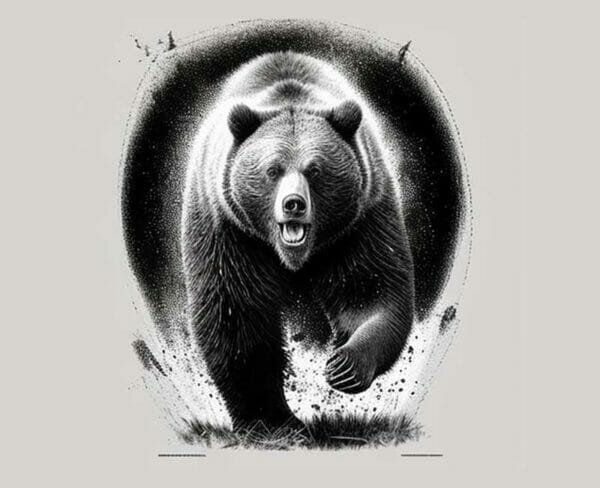
U.S.A. – Salmon on My Mind is the last book written by Francis E. Caldwell, known to most as Frank. The book is an autobiographical account of the adventures and life journey of Frank, from the time he returns to the United States after a tour in the Navy during World War II to his acquisition of a dedicated salmon troller in 1959, trailing off with explanations of what happened in later years, up until 2003. The book is hard to find in print these days.
Salmon on My Mind, by Francis E. Caldwell, 197 p. Lighthouse Press, 2004
The book offers rare insight into life in Alaska from 1950 to 1960, which is the major portion of the book. The hardships and difficulties encountered in work and daily life are fascinating and instructive. They seem remote from the current reality of cell phones with GPS and our Internet-based society of crowded cities and enormous state and federal welfare/safety nets. They seem as remote as late 1800s ranch life. Biographical works by ordinary people give current readers needed perspective on our past.
Of particular interest to this correspondent is Frank’s deadly encounter with a grizzly bear while duck hunting in Alaska in 1952. It adds to the growing number of cases where a bird hunter used bird shot against an attacking bear with deadly effect. Frank and a friend, Paul White, were hunting at the head of Boca de Quadra, a bit south of Ketchikan, AK. They spotted a flock of goldeneye ducks and made a plan to get within range of the birds. The plan involved rounding a long spit of land in their skiff, then crossing the spit to come up on the ducks. Paul was running the outboard motor. As the skiff grounded on the beach, Frank jumped out to tie up the boat to an alder at the edge of the brush.
From page 124 of Salmon on My Mind:
I carried a Remington pump shotgun. Paul had a rusty, beat-up 30-40 Craig. He was running the motor. As the skiff’s bow ground on the beach, I jumped out, the painter in one hand, shotgun in the other. The tide was out and it was 50 feet to the nearest alder that I could that I could tie the bow line to.
As I walked up the beach, a bear tore out of the brush and came charging down the beach straight at me. Gravel sprayed from the bear’s feet. I’d never shot a bear before in my life, but I had been a hunter since age six, and I had always been handy with a gun. Without even thinking, or knowing what I was doing, I dropped the painter, flung up the gun, held back the trigger and worked the slide action until the firing pin went click, click, click.
The bear went down in a heap, its front legs spread-eagled. I reloaded, but the bear never moved. Paul was still in the skiff, his mouth hanging open. “I’ll be damned. I’ll be damned,” Paul repeated over and over.
Paul paced off the distances. The bear had emerged sixteen paces from Frank. The dead bear was only six paces. Frank shot the bear with three charges of number 6 shot duck loads, which would ordinarily be 1 1/4 ounce loads, at the time. The account shows how deadly bird shot can be. Frank was shooting at the head, which absorbed most of the shot charges. With hundreds of pellets impacting the mouth, nose, and eyes of a charging bear, it is not hard to see that some of them reached the brain. Closely packed pellets often follow existing wound tracks from a leading pellet and extend it.
Paul said he never knew what was happening until he heard Frank shoot. He looked up, and the bear was going down.
Frank says the pump shotgun was a Remington. This correspondent wonders if it was a Remington model 31, known for its extremely smooth action. The Remington 870 had just come out in 1950. It has a disconnector. Either shotgun is capable of extremely rapid fire.
The detailed accounts of Frank’s everyday adventures in the panhandle of Alaska from 1950 to 1960 are inspiring and entertaining.
About Dean Weingarten:
Dean Weingarten has been a peace officer, a military officer, was on the University of Wisconsin Pistol Team for four years, and was first certified to teach firearms safety in 1973. He taught the Arizona concealed carry course for fifteen years until the goal of Constitutional Carry was attained. He has degrees in meteorology and mining engineering and retired from the Department of Defense after a 30 year career in Army Research, Development, Testing, and Evaluation.



It’s still an ounce and a quarter of lead and at that distance the spread would be negligible.
I couldn’t agree with you more! 1 1/4 oz. of lead from the distance reported would be no less effective as a 1 1/4 oz. lead slug. And, 3 of them to boot!
Mr. Weingarten
Thank you once again for the Great bear story!
You never fail to convey factual, insightful accounts of events/happenings that never have to be checked on for truth or accuracy. Your articles are always informative & I appreciate you.